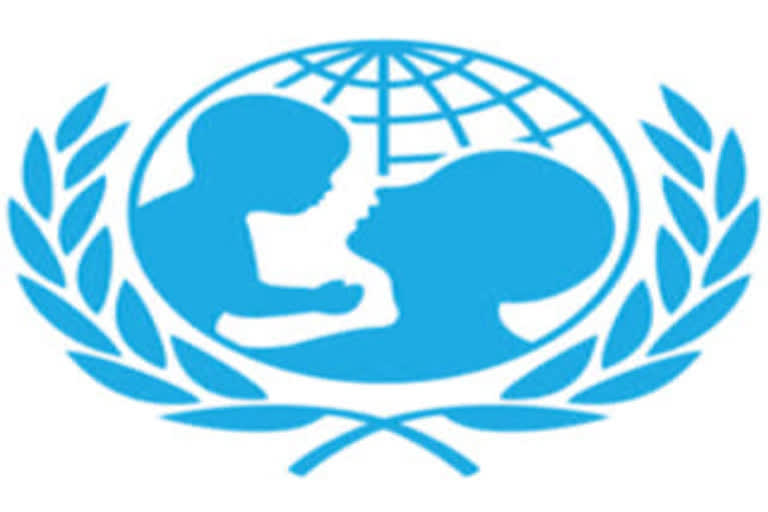New Delhi: India is one of the 33 extremely high-risk countries with repeated flooding and air pollution being the repeated environmental shocks leading to socio-economic adverse consequences for women and children, according to UNICEF’s first child-focused climate risk index, Children’s Climate Risk Index (CCRI).
It is estimated that more than 600 million Indians will face ‘acute water shortages' in the coming years, while at the same time flash flooding is to increase significantly in the majority of India’s urban areas once the global temperature increase rises above 2° Celsius. Twenty-one of the world’s 30 cities with the most polluted air in 2020 were in India (IQ Air Report 2020).
Read: India has highest number of unvaccinated, under-vaccinated kids worldwide at 3.5 million: UNICEF
‘The Climate Crisis Is a Child Rights Crisis: Introducing the Children’s Climate Risk Index’ (CCRI) is UNICEF’s first child-focused climate risk index. It ranks countries based on children’s exposure to climate and environmental shocks, such as cyclones and heatwaves, as well as their vulnerability to those shocks, based on their access to essential services.
Pakistan, Bangladesh, Afghanistan and India are among four South Asian countries where children are at 'extremely high risk' of the impacts of the climate crisis, with a ranking of 14, 15, 15 and 26 respectively. While Nepal is ranked 51, Sri Lanka is at 61st place. Bhutan is ranked 111, with children at relatively lower risk. Approximately 1 billion children live in one of the 33 countries classified as “extremely high-risk”, including the four South Asian countries.
“For the first time, we have clear evidence of the impact of climate change on millions of children in South Asia. Droughts, floods, air pollution and river erosion across the region have left millions of children homeless and hungry, and without any healthcare and water,” said George Laryea-Adjei, UNICEF Regional Director for South Asia.
“Together, climate change and the COVID-19 pandemic have created an alarming crisis for South Asian children. The time to act is now - if we invest in water, healthcare and education, we can protect their futures from the impacts of a changing climate and degrading environment,” Adjei said.
Read: UNICEF India, Facebook launch initiative to create safe online environment for children
The report found that these South Asian children are in constant danger from riverine floods and air pollution, but also that investments in child health, nutrition, and education can make a significant difference to protect children from climate change.
South Asia is home to over 600 million children and has the highest number of young people globally. South Asian countries are among the most vulnerable globally to the impacts of climate change. Extreme climate-related events - heatwaves, storms, floods, fires and droughts - affect more than half of the region's population every year and continue to burden South Asian countries’ economies. Rising global temperatures and changing weather patterns have put the futures of millions of children living in climate-vulnerable areas in South Asia at constant risk. Worse, before they can recover from one disaster, another one strikes, reversing any progress made.
The report also reveals a disconnect between where greenhouse gas emissions are generated, and where children are enduring the most significant climate-driven impacts. The 33 extremely high-risk countries, including four from South Asia, collectively emit just 9 per cent of global CO2 emissions. Conversely, the 10 highest emitting countries collectively account for nearly 70 per cent of global emissions.
In light of these findings, UNICEF is urgently calling on governments, businesses and relevant actors to increase investment in climate adaptation and resilience in key services for children, reduce greenhouse gas emissions. Countries must cut their emissions by at least 45 per cent (compared to 2010 levels) by 2030 to keep warming to no more than 1.5 degrees Celsius, provide children with climate education and greens skills, critical for their adaptation to and preparation for the effects of climate change, include young people in all national, regional and international climate negotiations and decisions, including at COP26 and ensure the recovery from the COVID-19 pandemic is green, low-carbon and inclusive so that the capacity of future generations to respond to the climate crisis is not compromised.
Dr Yasmin Ali Haque, UNICEF India Representative said, “Climate change is a child rights crisis. The Children’s Climate Change Index data has pointed to the serious deprivations faced by children, due to the intensifying effect that climate and environmental shocks have on existing inadequate access to essential services, such as water and sanitation, healthcare and education. Understanding where and how children are uniquely vulnerable to this crisis is crucial to building our resilience and effectively addressing climate change. UNICEF hopes the findings of the report will help prioritize action to protect those most at risk and to ensure that children inherit a livable planet."


